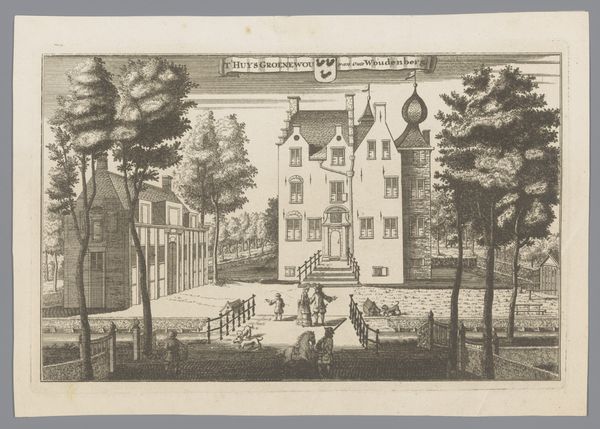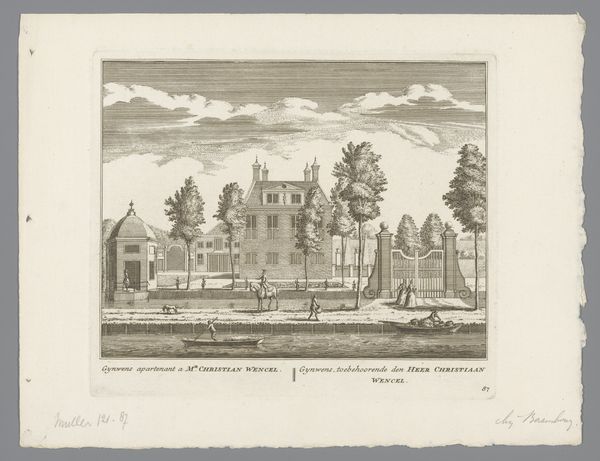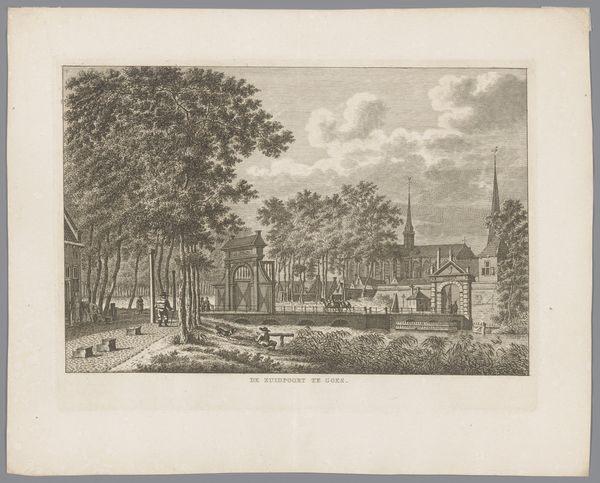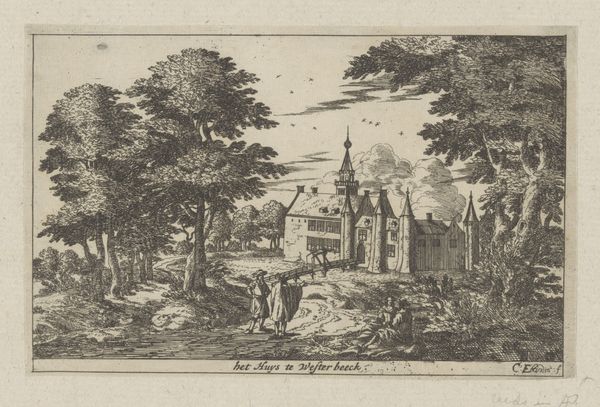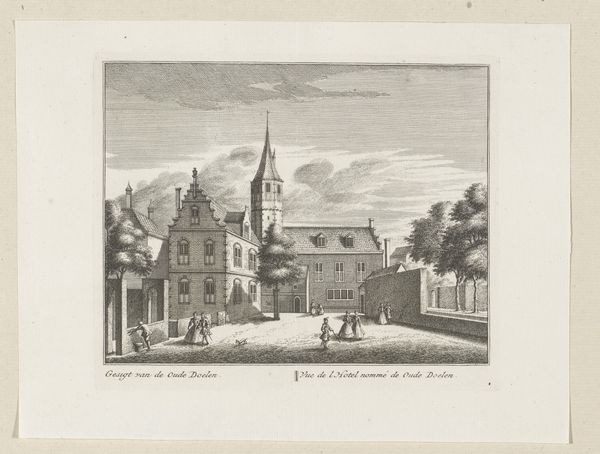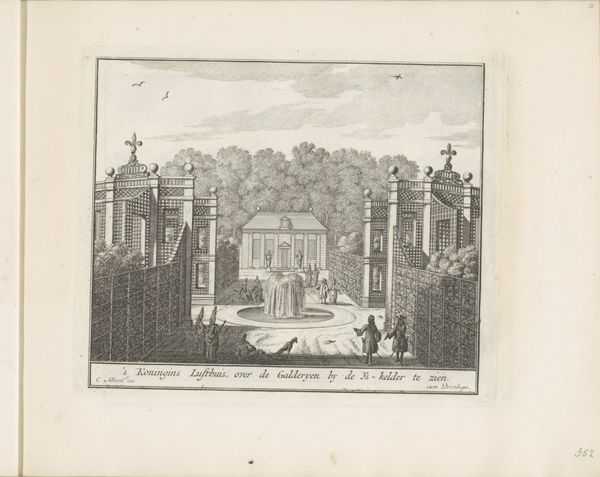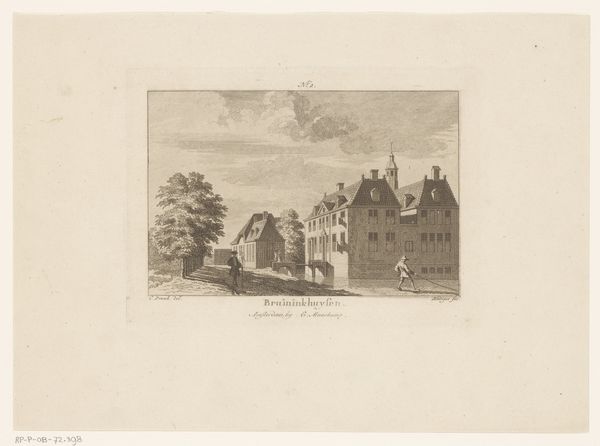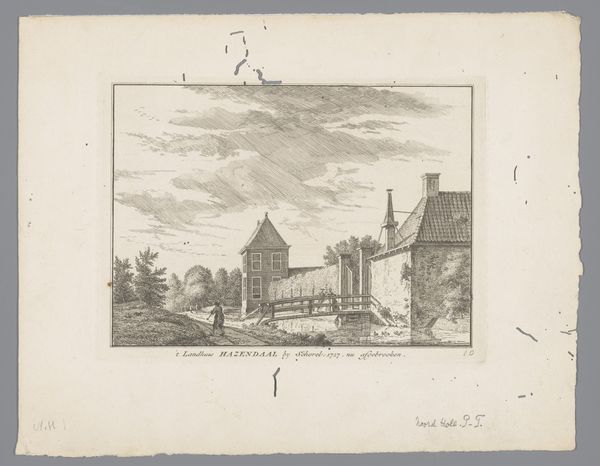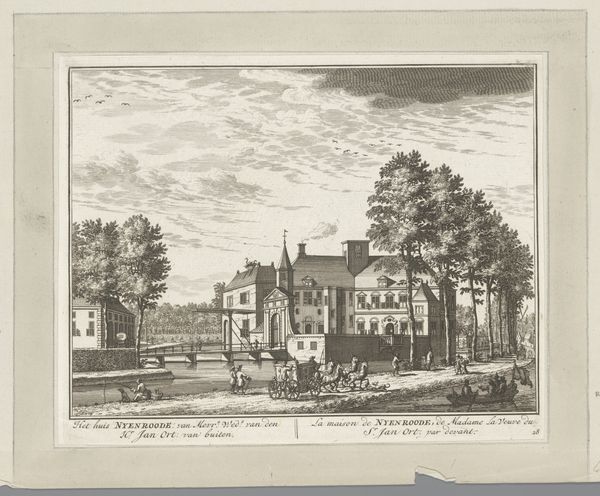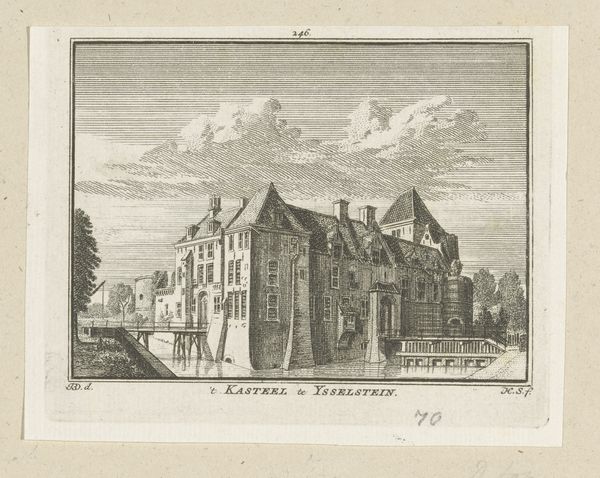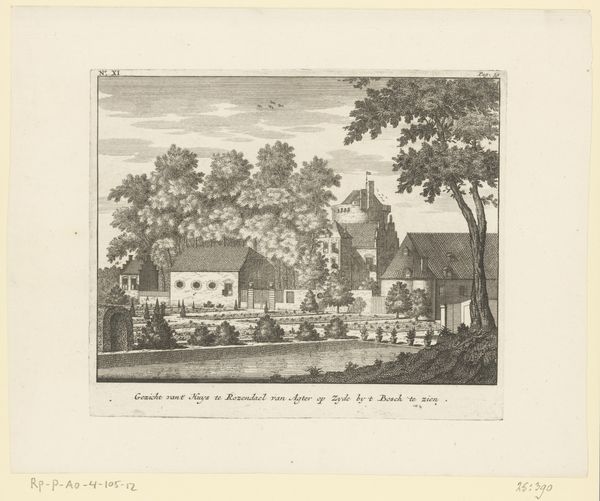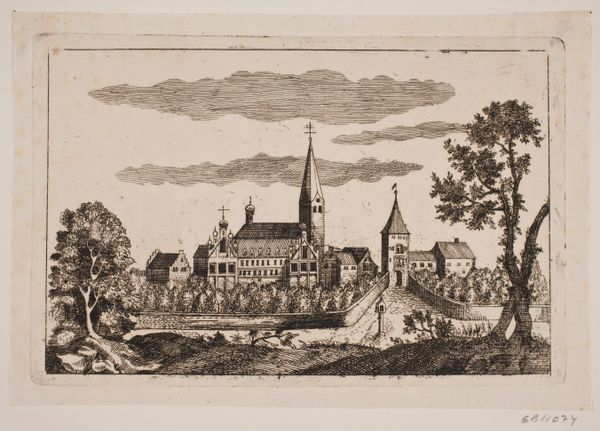
drawing, print, etching
#
drawing
#
baroque
#
ink paper printed
# print
#
etching
#
old engraving style
#
landscape
Dimensions: height 149 mm, width 205 mm
Copyright: Rijks Museum: Open Domain
Curator: Looking at Jan van Vianen's "View of the House or Castle Rhijnauwen near Bunnik," etched sometime after 1710, I’m immediately drawn to its... starkness. It feels very precise. Editor: Oh, yes, stark! It’s like a stage set. Everything meticulously placed: the little horse and carriage, that slightly menacing castle. You almost expect a tiny Hamlet to pop out, pondering material conditions. Curator: Precisely. It is so considered, every line seems placed for a reason. And the way he's captured the textures – the stone, the water, the foliage... It's quite remarkable for an etching. The labor-intensive nature of this kind of printmaking. Editor: It's fascinating to consider how an etching like this—a reproducible image—plays into ideas of property and possession. Rhijnauwen's owner likely saw value in circulating this view of their estate, like a proto-Instagram post shouting, "Look what I own!". Curator: That’s such an interesting perspective. Because, looking at it, there's a melancholic feel too. Those dark lines give it a sort of nostalgic beauty, even though it's clearly a depiction of wealth. Editor: It’s true! All that etching, all that labor—for a depiction of leisure, ultimately. These Baroque landscape prints romanticize the world, yes, but on whose backs was it romanticized, quite literally? The engraver's certainly, but who paid for this idealized reflection? Curator: Food for thought. It adds another layer to the experience, contemplating how access to such idyllic scenes was inherently limited. Editor: Yes. This image freezes a moment, but the cost of that moment, who gains, and who toils remain ghostly, even now. Curator: I’ll be pondering on that for a good while. It makes you question how the beautiful is often intertwined with complicated truths. Editor: It certainly challenges one to consider not just *what* is represented, but *how* and *why* it was made to be seen at all.
Comments
No comments
Be the first to comment and join the conversation on the ultimate creative platform.
